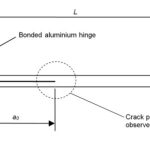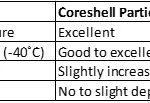It's been a while since new content was added to the blog. Starting next Monday, I will start a new series on Thermoset Re-use and Recycling. The posts will discuss some of the emerging trends in vitrimers and chemical recycling. Subsequently, I will return to discussions around polymers in electronics, specifically low Dk/Df polymers for 5G applications. The new posts ... [Click to Continue...]
Remembering our Fallen Heroes on Veterans Day
Special recognition to my late father, Captain Douglas E. Gotro, US Army, Korean War Veteran and my late brother Craig A. Gotro, Senior Airman, US Air Force. ... [Click to Continue...]
Toughening Thermosets with Block Copolymers
Guest post by Jeremy Pasatta, Advanced Polymer Coatings Previous blog posts on toughening have looked at the need for tougheners in thermosets, the two main toughening technologies, RLP and coreshell particles, along with methods of how to measure toughness and typical increases in toughness with RLP and coreshell particles. In this blog post we will look at another form of ... [Click to Continue...]
Measuring the Toughness of Thermosets
Guest post by Jeremy Pasatta, Advanced Polymer Coatings Now that we have looked at the theory of toughening thermosets with second phase tougheners along with the two most common tougheners (RLP and coreshell particles) let’s look at how we measure the toughness of thermosets. There are several different methods to measure the toughness of thermosets, and the method that is ... [Click to Continue...]
Toughening Thermosets with Coreshell Particles
Guest post by Jeremy Pasatta, Advanced Polymer Coatings The previous two blog posts have looked at both the fundamentals of toughening thermosets as well as one of the most common technologies used to toughen thermosets – Reactive Liquid Polymers and CTBN. In this blog post, we’ll look at toughening thermosets with coreshell particles. Coreshell particles are exactly as ... [Click to Continue...]



